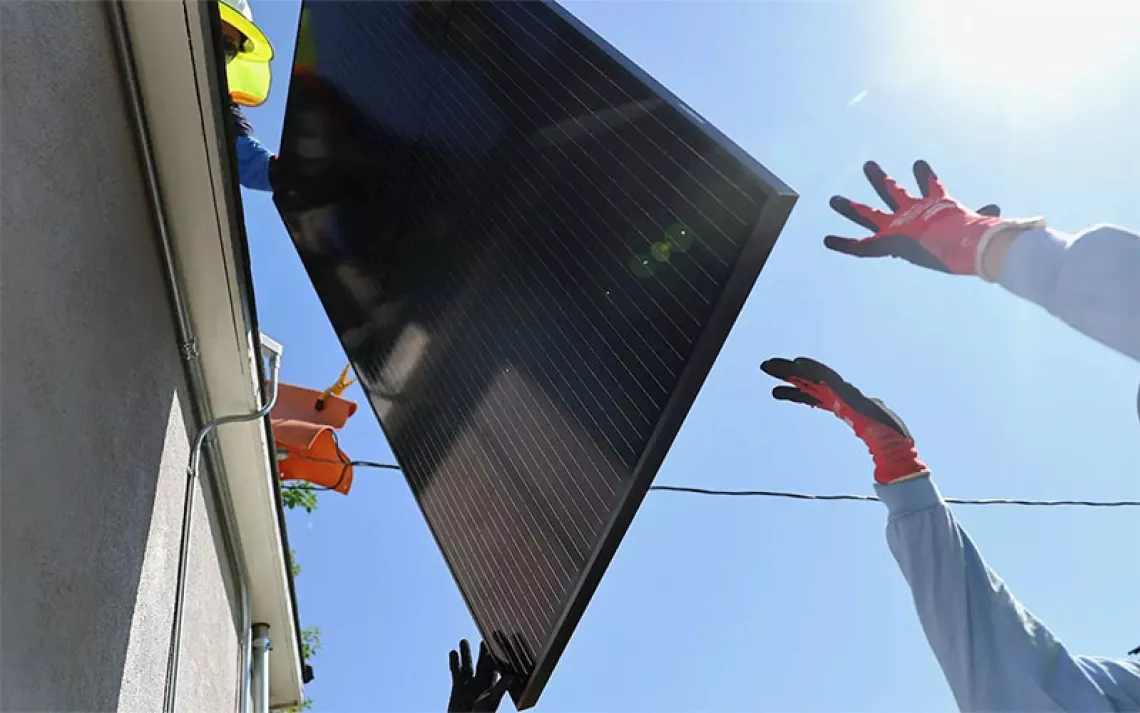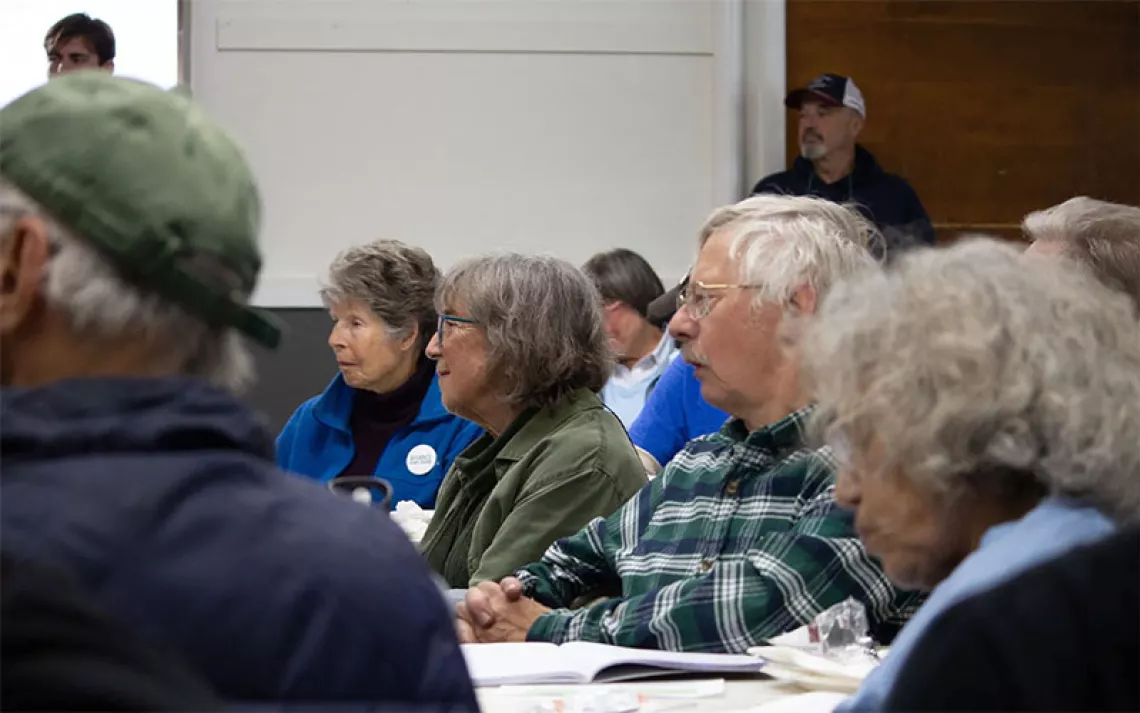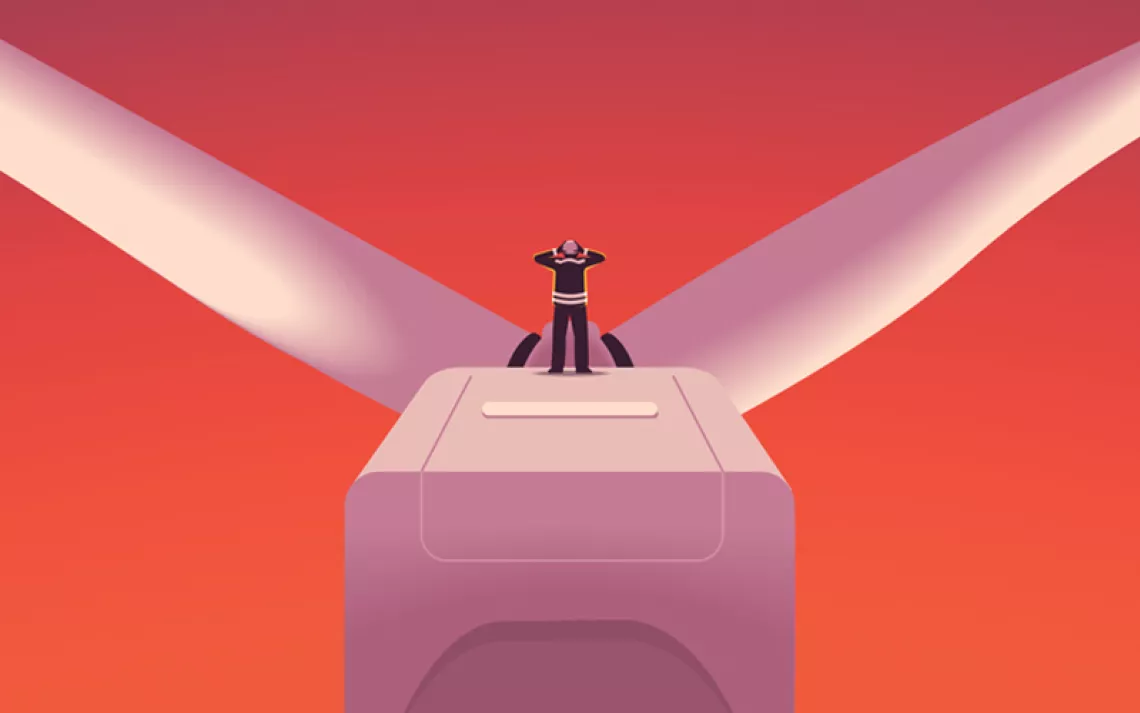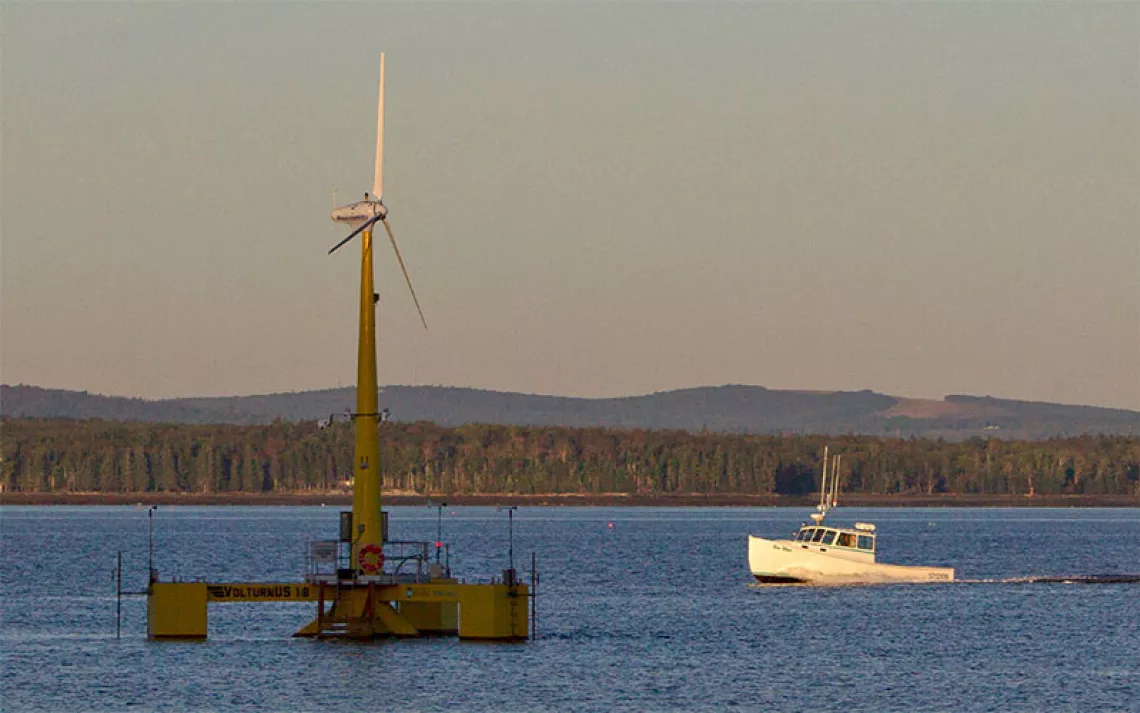Offshore Wind Development in the US Is Reaching Gale Force
Wind turbines are already in the water generating electricity—and bigger hopes for the future
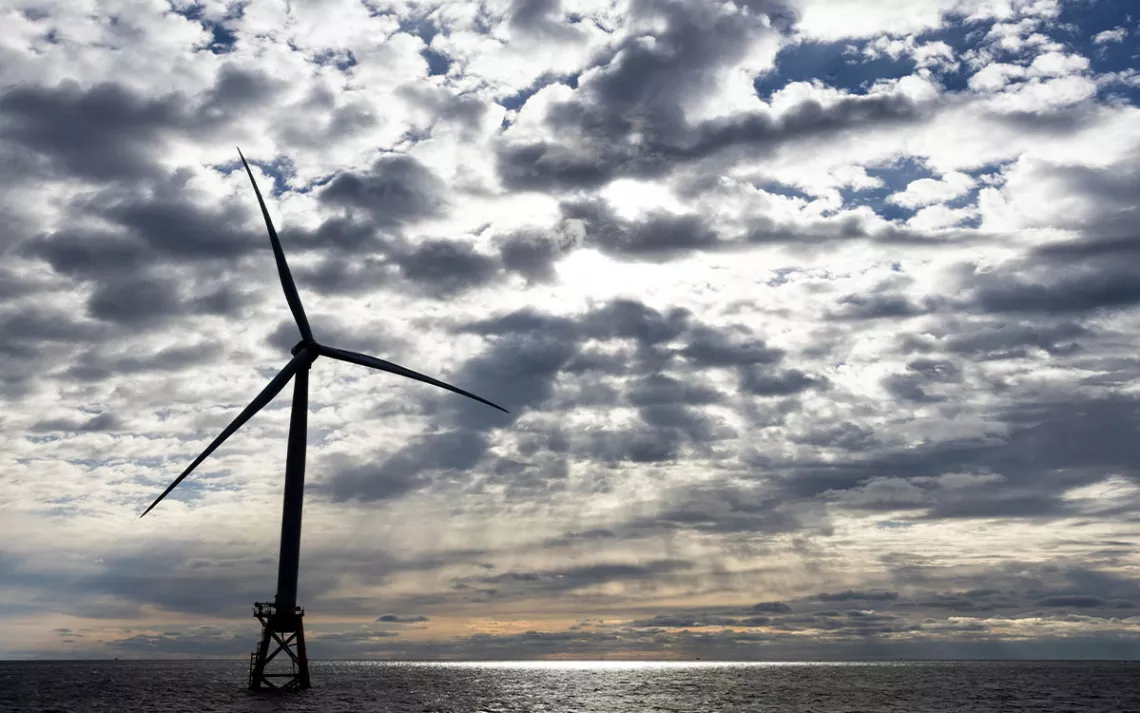
A Block Island Wind Farm turbine off Rhode Island. | Photo by Julia Nikhinson/AP
The first half of 2024 has proved beyond a shadow of a doubt that offshore wind in the United States is on track to become one of the most critical parts of the nation’s energy supply. With construction and progress on several projects happening this summer, offshore wind is creating thousands of jobs, boosting local economies, and delivering more clean, reliable energy to communities in the United States than ever. Today there are enough offshore wind projects moving forward to power nearly 5 million homes.
After attending two offshore wind conferences earlier this year—the International Partnering Forum in New Orleans and the Pacific Offshore Wind Summit in Sacramento—the two of us are inspired by the progress we’re seeing in project development and construction off our coasts, as well as by the sense of collaboration in the offshore wind community from the local to the national level. At every step of the process and at every level of government, there is a focus on sharing lessons learned as more and more wind projects take shape off US shores. We are learning from offshore wind in Europe and from the first wind projects along American coastlines, and looking to the Gulf of Mexico for lessons gleaned from offshore drilling leasing and port infrastructure. It’s clear that partnerships are key as developers, unions, conservation organizations, and communities work to build this new industry together. Collaboration will be essential to build on the current momentum and ensure the offshore wind industry creates good jobs and provides real benefits to local communities.
Federal leadership has been a primary force driving progress during the past three years. The Biden–Harris administration approved its ninth offshore wind project this year and has, in total, approved more than 13 gigawatts of offshore wind. Leaning on their decades of experience with leasing offshore energy, the Department of the Interior established a new five-year plan for leasing federal wind energy areas. This plan increases transparency and predictability and creates greater regulatory certainty for offshore wind. This gives us an opportunity as advocates to weigh in earlier in the process to ensure offshore wind is scaled in a responsible, equitable way for our environment, wildlife, communities, and workers. Meanwhile, the Bureau of Ocean Energy Management and the Bureau of Safety & Environmental Enforcement have modernized their process for bringing renewables online. For their part, the Department of Energy and the National Renewable Energy Laboratory are leading the way with policy recommendations, cutting-edge research, and funding. And the Treasury Department is creating guidance for domestic supply chain tax credits.
All this federal action and collaboration is driving the US offshore wind industry forward. Offshore wind is no longer something imagined for the future—it’s happening right now. This spring, the turbines at South Fork off the coast of Long Island began turning, marking the first commercial-scale offshore wind project in the country. South Fork Wind created hundreds of good-paying union jobs during construction and is now providing power to about 70,000 homes and businesses on Long Island.
In May, Revolution Wind and the Coastal Virginia Offshore Wind (CVOW) projects put steel in the water along the East Coast. When fully built, the 2.6-gigawatt CVOW project located 29 miles off the coast of Virginia Beach will generate enough clean energy to power 660,000 homes and will support more than 1,000 jobs in Hampton Roads annually throughout its 20-year operation. We must continue this momentum by building out US manufacturing and constructing new ships with union labor.

Sign up to receive Sierra News & Views
Get articles like this one sent directly to your inbox weekly.
With this action you affirm you want to receive Sierra Club communications and may vote on policy designated by the Sierra Club Board.
By 2030, offshore wind is expected to create 77,000 family-sustaining jobs, support thousands of small businesses, and inject hundreds of millions of dollars in local communities. Construction of new vessels, port improvements, and turbine manufacturing and assembly—each of these activities in the offshore wind industry can generate good jobs up and down the supply chain.
However, a lot more investment in domestic manufacturing is needed. Last year, President Biden visited a Philadelphia shipyard that employs over 1,000 workers across nine unions to build an offshore wind vessel, using steel plates made by the United Steelworkers in Indiana. If offshore wind developers and related industries invest in a domestic supply chain, these union jobs will continue to grow. Project labor agreements are helping to ensure that offshore wind construction jobs are high-quality, family-sustaining union jobs. For example, Equinor and the Building & Construction Trades Council of Greater New York and Vicinity signed a project labor agreement that will create over 1,000 union jobs and apprenticeships.
With continued collaboration and cross-sector partnerships, communities across the country will see the benefits of offshore wind energy: reliable, domestic power that helps stabilize energy prices, generates thousands of good-paying union jobs, drives millions of dollars in local economic investment, and reduces pollution. These partnerships and the wide range of benefits for everyone at the table are what lead to resiliency of this energy source. The Sierra Club and the BlueGreen Alliance will continue to rally behind responsibly sited, equitably developed offshore wind energy—this year and for years to come.
 The Magazine of The Sierra Club
The Magazine of The Sierra Club
